I'm trying to understand C# LINQ implementation and how is it performance against FOR and FOREACH loops.
Every where I see posts of how much better (in terms of performance) is to use a for loop implementation over a LINQ one. Example1, Example2, Example3
How ever, I'm trying to come along with my own POC to see if I can optimize the GroupBy and the Where operations and I see the opposite. Can you tell me if my implementations can be optimized better?
//Where Implementation (Main Call)
var students = createStudentList();
var stopwatch1 = new Stopwatch();
stopwatch1.Start();
var y = students.Where(s=> s.age == 32);
foreach(var entry in y){}
stopwatch1.Stop();
Console.WriteLine("1) TICKS ELAPSED WHERE: " + stopwatch1.ElapsedTicks);
Console.WriteLine("1) MILLISECONDS WHERE: " + stopwatch1.ElapsedMilliseconds);
var stopwatch2 = new Stopwatch();
stopwatch2.Start();
var y2 = WhereManual(students);
foreach(var entry in y2){}
stopwatch2.Stop();
Console.WriteLine("2) TICKS ELAPSED FOR: " + stopwatch2.ElapsedTicks);
Console.WriteLine("2) MILLISECONDS FOR: " + stopwatch2.ElapsedMilliseconds);
public List<Student> WhereManual(List<Student> students){
var filteredList = new List<Student>();
for(var i = 0; i < students.Count(); i++){
var student = students[i];
if(student.age == 32){
filteredList.Add(student);
}
}
return filteredList;
}
Output:
1) TICKS ELAPSED WHERE: 389478
1) MILLISECONDS WHERE: 38
2) TICKS ELAPSED FOR: 654023
2) MILLISECONDS FOR: 65
And for the GroupBy I have
//GroupBy Implementation (Main Call)
var students = createStudentList();
var stopwatch1 = new Stopwatch();
stopwatch1.Start();
var y = students.GroupBy(s => s.age);
foreach(var entry in y){}
stopwatch1.Stop();
Console.WriteLine("1) TICKS ELAPSED GROUPBY: " + stopwatch1.ElapsedTicks);
Console.WriteLine("1) MILLISECONDS GROUPBY: " + stopwatch1.ElapsedMilliseconds);
var stopwatch2 = new Stopwatch();
stopwatch2.Start();
var y2 = dictOperation(students);
foreach(var entry in y2){}
stopwatch2.Stop();
Console.WriteLine("2) TICKS ELAPSED FOR: " + stopwatch2.ElapsedTicks);
Console.WriteLine("2) MILLISECONDS FOR: " + stopwatch2.ElapsedMilliseconds);
public List<Student> GetStudent(Dictionary<int, List<Student>> dict, int age){
List<Student> dictStudent;
return dict.TryGetValue(age, out dictStudent) ? dictStudent : null;
}
public Dictionary<int, List<Student>> dictOperation(List<Student> students){
var dict = new Dictionary<int, List<Student>>();
for(var i = 0; i < students.Count(); i++){
var student = students[i];
var studentAge = student.age;
var dictStudent = GetStudent(dict, studentAge);
if(dictStudent == null)
{
dict.Add(studentAge, new List<Student>(){student});
}
else
{
dictStudent.Add(student);
}
}
return dict;
}
And this is the output:
1) TICKS ELAPSED GROUPBY: 865702
1) MILLISECONDS GROUPBY: 86
2) TICKS ELAPSED FOR: 1364863
2) MILLISECONDS FOR: 1.36
